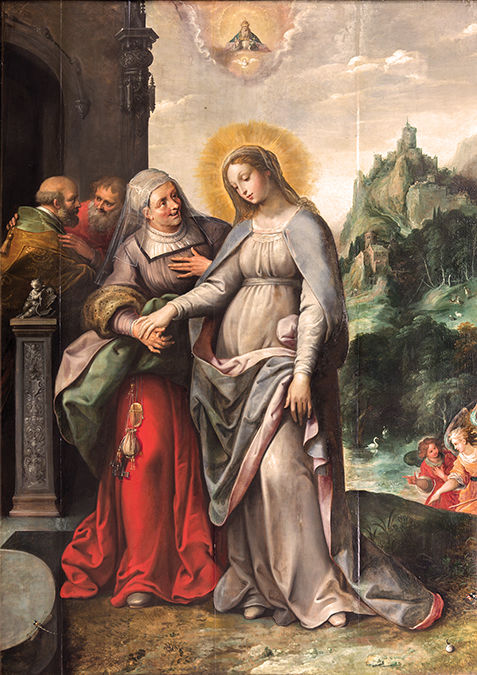We are all familiar with the biblical story of the Visitation. It happens at the beginning of Luke’s Gospel. Mary and her cousin, Elizabeth, both pregnant, meet. One is carrying Jesus and the other is carrying John the Baptist.
The Gospels want us to recognize that both these pregnancies are biologically impossible — one is a virginal conception and the other is a conception that occurs far beyond someone’s childbearing years. There is clearly something of the divine in each.
In simple language, each woman is carrying a special gift from heaven and each is carrying a part of the divine promise that will one day establish God’s peace on this earth.
But neither Mary nor Elizabeth, much less anyone around them, consciously recognizes the divine connection between the two children they are carrying. The Gospels present them to us as “cousins,” both the children and their mothers.
But the Gospels want us to think deeper than biology. They are cousins in the same way that Christ and those things that are also of the divine are cousins.
When Mary and Elizabeth meet, both are pregnant with the divine. Each is carrying a child from heaven; one is carrying Christ and the other is carrying a unique prophet, the cousin of the Christ.
There’s a lot in that image: Christ’s cousin unconsciously leaps for joy in the presence of Christ and that reaction draws the Magnificat out of the one who is carrying the Christ.
A few weeks ago I wrote about Christian de Cherge, the Trappist Abbott who was martyred in Algeria in 1996. He suggests that, among other things, this image is the key to how we as Christians are meant to meet other religions in the world. He sees the image as illustrating this paradigm:
Christianity is carrying Christ and other religions are also carrying something divine, a divine “cousin,” one who points to Christ. But all of this is unconscious. We do not really grasp the bond, the connection, between what we are carrying and what the other is carrying.
But we will recognize their kinship, however unconsciously, when we stand before another who does not share our Christian faith but is sincere and true to his or her own faith. In that encounter we will sense the connection: What we are carrying will make something leap for joy inside the other and that reaction will help draw the Magnificat out of us and, like Mary, we will want to stay with that other for mutual support.
We need that support, as does the other. As Christian de Cherge puts it:
“We know that those whom we have come to meet are like Elizabeth: they are bearers of a message that comes from God. Our Church does not tell us and does not know what the exact bond is between the Good News we bear and the message that gives life to the other,” he says.
“We may never know exactly what that bond is, but we do know that the other is also a bearer of a message that comes from God. So what should we do? What does witness consist in? What about mission?”
Christian de Cherge then adds this comment: “In the end, if we are attentive, if we situate our encounter with the other in the attention and the desire to meet ... and in our need for [each] other ...”
We need each other, everyone on this planet, Christians and non-Christians, Jews and Muslims, Protestants and Roman Catholics, Evangelicals and Unitarians, sincere agnostics and atheists. We need each other to understand God’s revelation.
Nobody understands fully without the other. Thus our interrelations with each other should not be born only out of enthusiasm for the truth we have been given, but it should issue forth too from our lack of the other.
Without the other, without recognizing that the other too is carrying the divine, we will, as Christian de Cherge asserts, be unable to truly release our own Magnificat.

